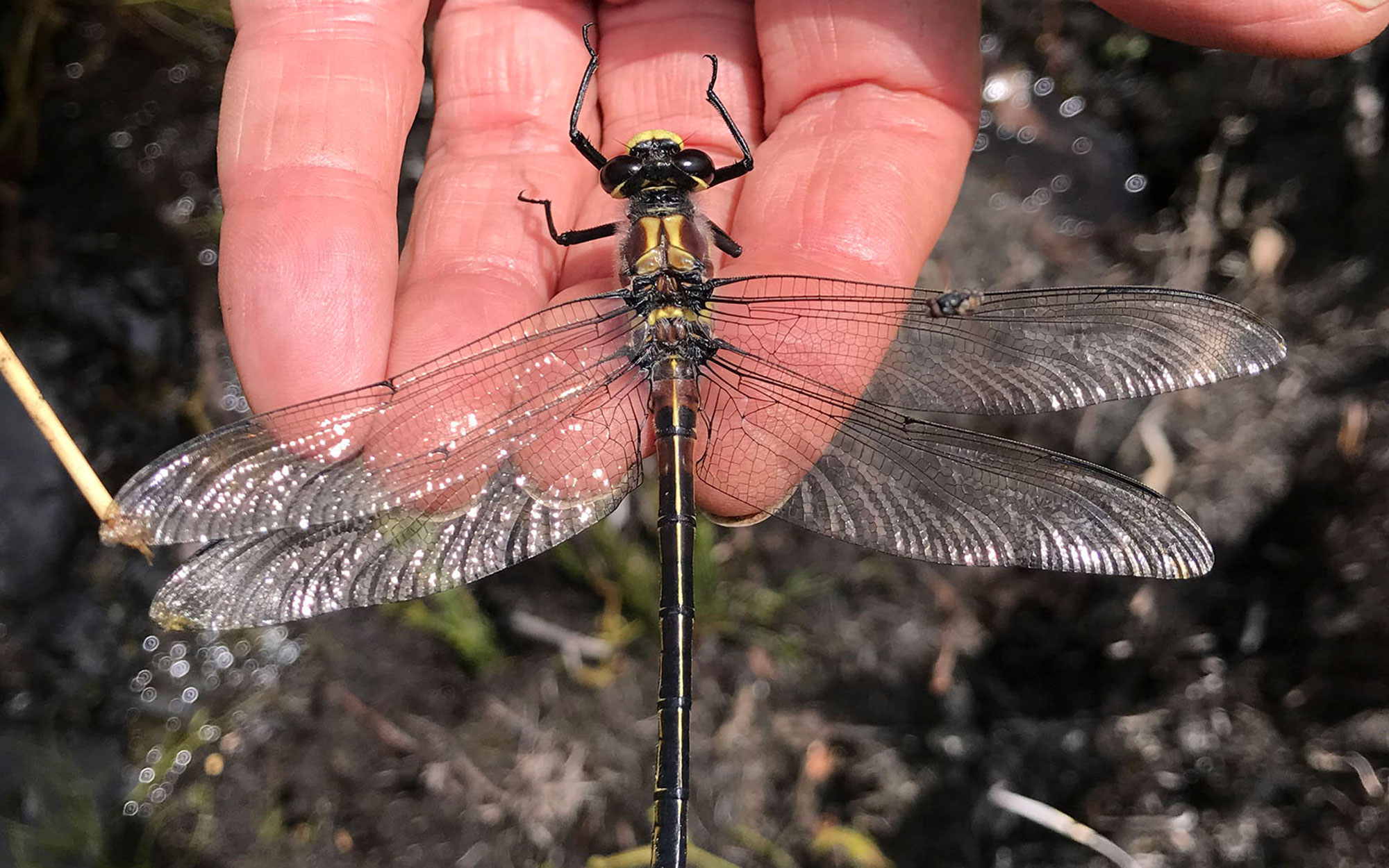Giant dragonfly – detection with eDNA and their environmental water requirements
The giant dragonfly is listed as endangered under the Biodiversity Conservation Act (2016) and the species depends on habitat provided by upland swamps, which are also listed as an endangered ecological community. Giant dragonflies make burrows in the water filled sediments of upland swamps. During the flying season, generally November to January, and when ready to hatch, the dragonflies emerge from their burrows and fly for the first time to hunt for flying insects and look for a mate. This flying season is usually the only time they can be seen above ground, making them difficult to detect.
We are working on a new method to use environmental DNA to detect giant dragonfly, which could allow us to monitor for this species at any time of the year. This involves collecting water samples from swamps and sending them to a laboratory to test for environmental DNA traces of giant dragonfly. Our monitoring survey in 2021 successfully used environmental DNA to identify the presence of giant dragonfly in one of the 6 samples collected from swamps near Blackheath, NSW. We have some more improvements to make to the method and more fieldwork is scheduled for late September 2023.
We are also working with researchers from the University of NSW, to measure the water levels in swamps that are needed to maintain giant dragonfly habitats. This project will help us to understand the water needs of the giant dragonfly and to ensure that water management decisions improve its conservation efforts and help to protect the endangered upland swamps and the amazing creatures that live in them.





